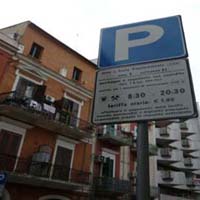Parking System and Sustainable Mobility: the Case of Bari
Abstract
The paper analyzes different strategies for parking management, considering parking as an essential component of the transportation system (Litmann, 2008). Parking facilities are a major cost to society, and parking conflicts are among the most common problems facing designers, operators and planners. Such problems can be often defined either in terms of supply or in terms of management. There are many reasons to use management strategies that result in more efficient use of parking resources, in order to address parking problems without expanding supply. Main benefits of parking management regards facility cost savings, improved quality of service, revenue generation, supports mobility management, support transit and smart grow. Starting from this definition, the article define more sustainable the parking strategies that reduce parking demand and describe the case of the city of Bari, where good parking management actions have reduced car dependence and increased public transport and bicycle use. In the city of Bari two different actions have been developed. The fist regards the definition of long term plan concerning mobility and land use: the Strategic Plan, the Master Plan, the Transport Plan and the Traffic Plan. The second regards the implementation of a system of interventions on the parking system. In particular a complete parking management has been developed in the peripheral areas and in the central core. In peripheral areas a Satellite Parking system was developed and a free transit service was then provided to connect destinations with remote parking facilities. This remote parking strategy was accompanied by an adequate use information, as signs and maps, in order to encourage motorists to use more distant facilities. By constructing parking facilities, the system intercepts commuters and visitors before they drive into the city center, reducing traffic problems. The historical centre was then closed to traffic and to parking, while in the central areas surrounding the old core, a fare parking system was developed. In particular a management of on-street public parking spaces was developed in the city centre supported by public transport improvements. In this way car use has been reduced and public transport and bicycle use increased in the last four years. Parking management become an important component of efforts to encourage more efficient transportation patterns, which reduced problems such as traffic congestion, roadway costs, pollution emissions, energy consumption and traffic accidents and created more attractive and efficient urban environment. Direct and short term impacts were more evident in central areas where traffic congestion was reduced consistently. Long term impacts as energy consumption reduction and a more efficient multimodal transport system will be revealed in the whole metropolitan area in the next future.Downloads

Copyright (c) 2014 Tema. Journal of Land Use, Mobility and Environment

This work is licensed under a Creative Commons Attribution 4.0 International License.
Authors who publish in this journal agree to the following:
1. Authors retain the rights to their work and give in to the journal the right of first publication of the work simultaneously licensed under a Creative Commons License - Attribution that allows others to share the work indicating the authorship and the initial publication in this journal.
2. Authors can adhere to other agreements of non-exclusive license for the distribution of the published version of the work (ex. To deposit it in an institutional repository or to publish it in a monography), provided to indicate that the document was first published in this journal.
3. Authors can distribute their work online (ex. In institutional repositories or in their website) prior to and during the submission process, as it can lead to productive exchanges and it can increase the quotations of the published work (See The Effect of Open Access)
